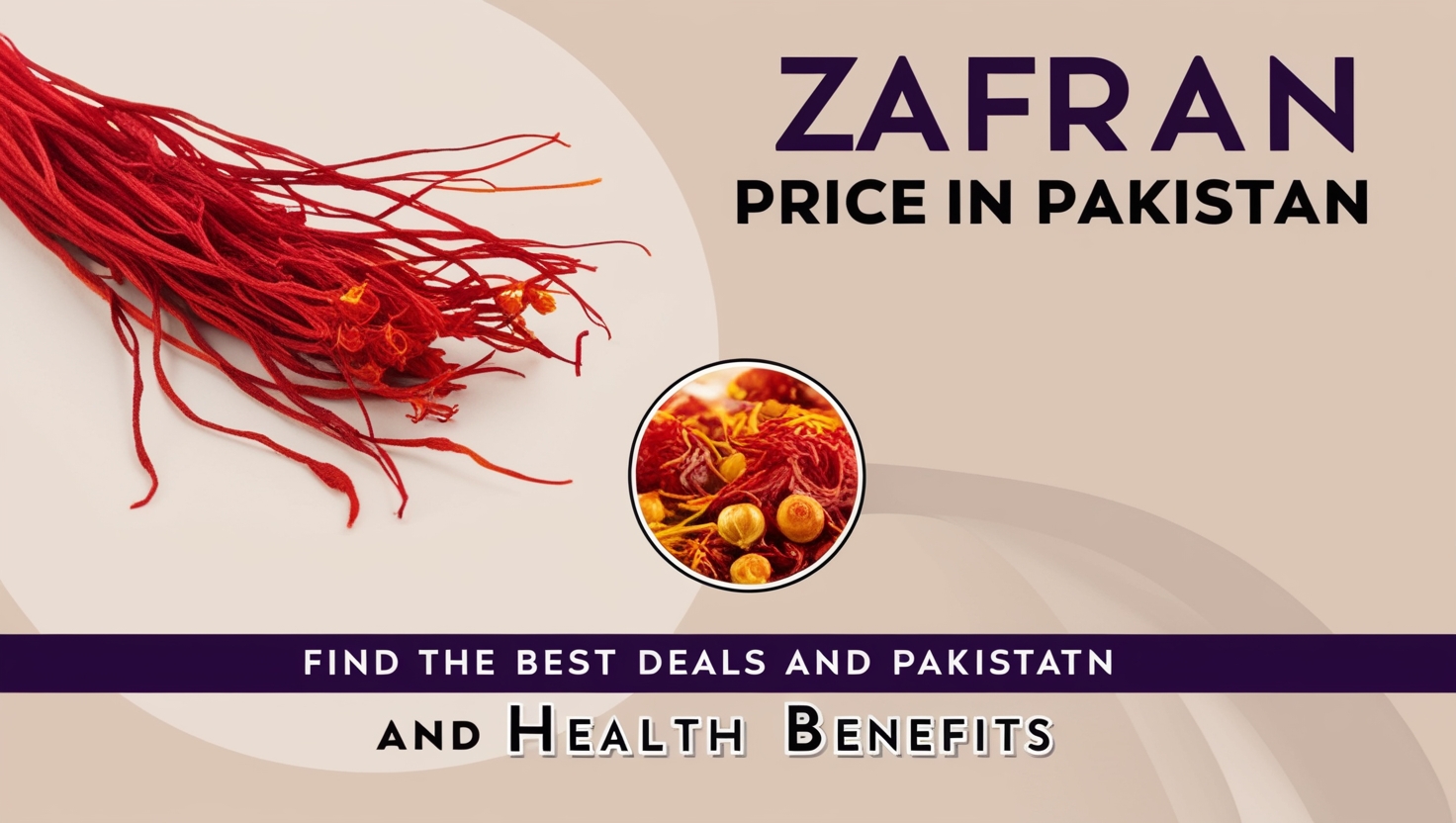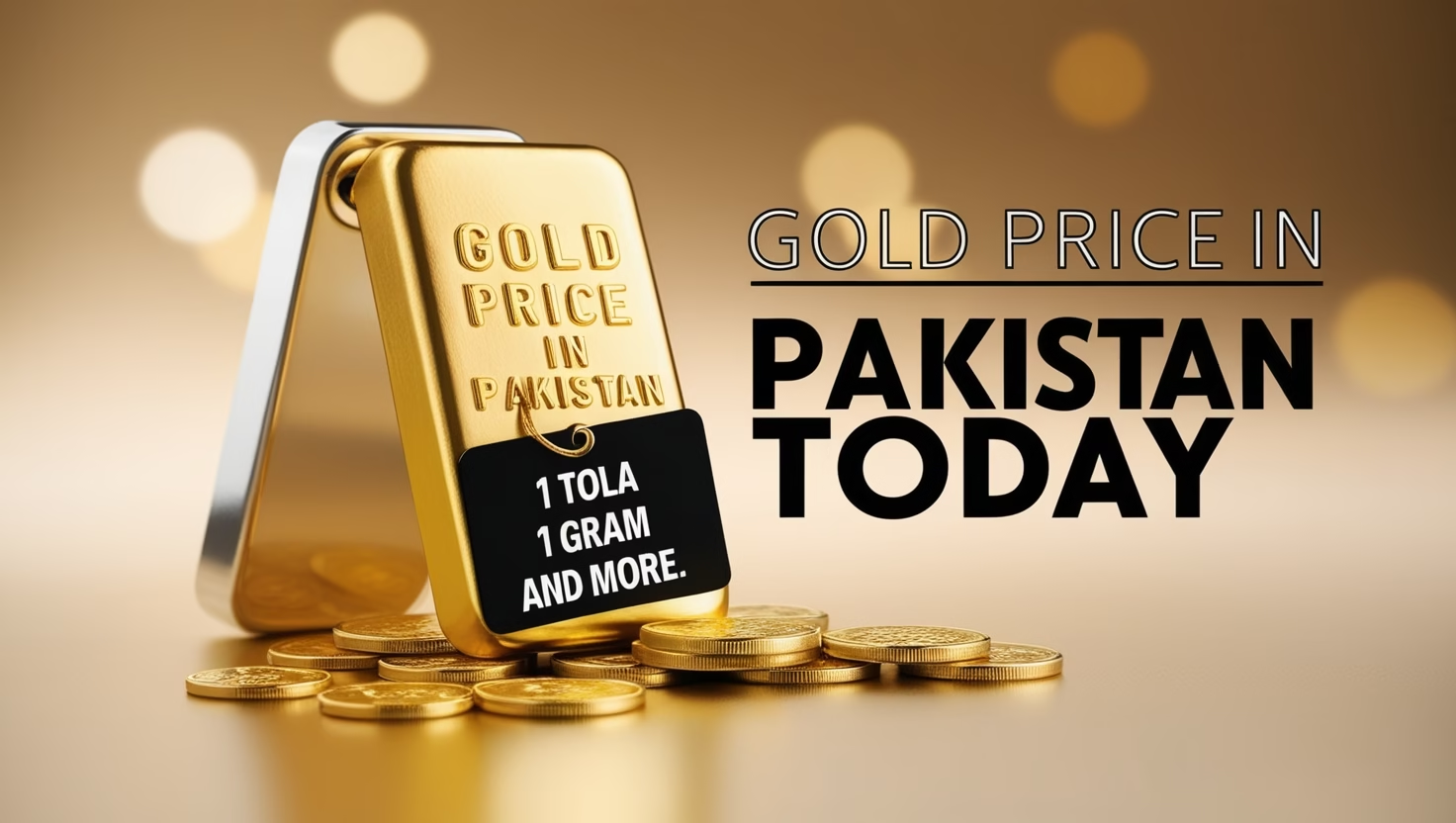What is Zafran? Zafran, commonly known internationally as saffron, is a highly valued spice for its unique flavour, vibrant colour, and aromatic qualities. It is derived from the stigmas of the Crocus sativus flower, which are carefully handpicked and dried to create saffron threads.
Zafran is considered one of the most expensive spices globally due to the labour-intensive harvesting process and the sheer volume of flowers needed to produce even a tiny amount of this spice.
Origins and Global Significance Historically, saffron has been cultivated in regions known for their unique climates, like Iran, Kashmir, Spain, and Afghanistan. Iran, in particular, dominates global production, with Kashmiri saffron being renowned for its premium quality and distinct flavour.
Ancient records highlight saffron’s role across multiple civilizations, from ancient Egypt to Persia, where it was prized as a symbol of luxury, medicine, and food enhancement.
The Role of Zafran in Pakistan In Pakistan, Zafran is not just a spice but a cultural symbol deeply intertwined with the nation’s culinary heritage and health practices. Its distinctive colour and aroma make it a key ingredient in traditional dishes like biryani, qorma, and various desserts.
Zafran’s health benefits have cemented its role in traditional remedies and homoeopathic treatments. Known for its antioxidant and anti-inflammatory properties, Zafran is often used to support mood, memory, and overall health. The quality and purity of Zafran are highly regarded, with consumers prioritizing authentic Zafran for its medicinal and culinary value.
As the demand for Zafran grows within Pakistan, consumers are increasingly interested in understanding the dynamics of the Zafran price in Pakistan and where to find quality Zafran at competitive rates. Given that Zafran is often imported, fluctuations in import costs, demand, and exchange rates impact its price in Pakistan. Exploring “zafran price in Pakistan” provides valuable insights for consumers and businesses who seek to buy or invest in this premium spice.
Table of Contents
Factors Affecting Zafran Prices in Pakistan
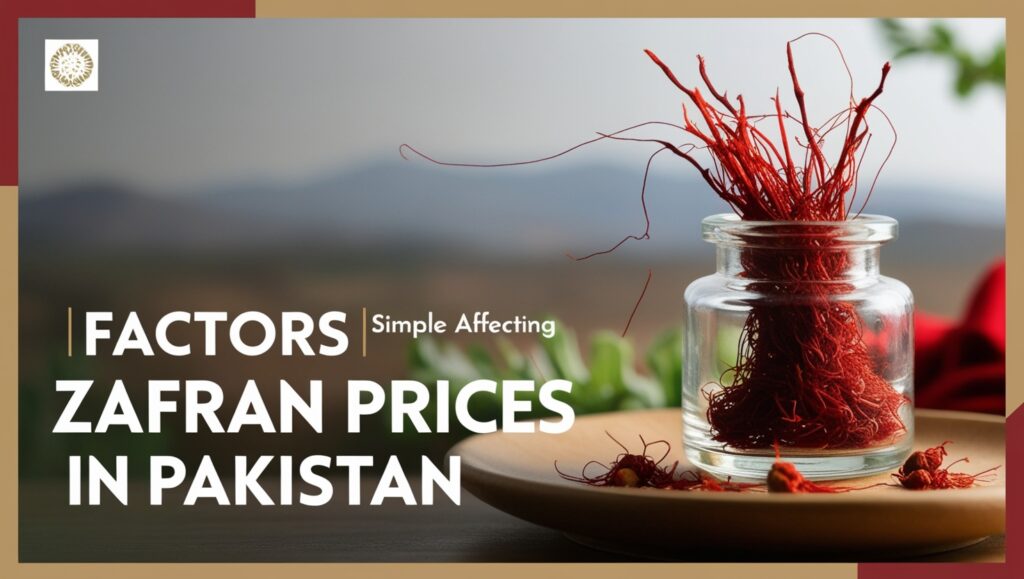
1. Quality and Grade
- Different Grades of Zafran: Zafran, commonly known as saffron, varies significantly in quality, directly impacting its price. Premium grades, such as Kashmiri and Iranian, are generally more expensive due to their rich colour, distinct aroma, and high concentration of active compounds.
- Kashmiri Zafran: Known for its deep red hue and strong flavour, Kashmiri Zafran is among the highest quality and, therefore, typically comes at a premium price. It’s often preferred for its purity and potency, making it popular among Pakistani consumers.
- Iranian Zafran: Slightly more affordable than Kashmiri, Iranian Zafran is still highly regarded and is available at various price points depending on the grade. It’s widely available in Pakistan and often chosen for its balanced quality and price.
- Grading within Types: Within each type, Zafran is further categorized into grades such as Pushal, Sargol, and Negin, with Negin being the highest quality. These grading distinctions influence price, with Negin being costlier due to its intense colour, flavour, and purity.
- Impact on Price: Higher grades result in a higher price due to labour-intensive harvesting and quality control measures. Consumers in Pakistan may need to balance their budget and the quality they require, influencing overall demand and price trends.
2. Market Demand and Seasonality
- Consumer Demand in Pakistan: Zafran is highly sought after in Pakistan for its culinary, medicinal, and cultural uses, especially during certain times of the year, like Ramadan or wedding seasons, when demand surges. Increased demand during these peak times often leads to higher prices.
- Seasonal Harvests and Supply Chain: Zafran is a seasonal crop with only one yearly harvest. This limited Availability impacts prices as supply cannot always meet demand. Typically, prices are lower right after harvest season (late autumn) and increase as stocks deplete yearly.
- Effects of Festive Seasons: The spike in demand around holidays and celebrations temporarily affects prices. Retailers may stock up in advance to anticipate these trends, but high demand can still lead to noticeable price hikes.
3. Import Taxes and Sourcing Costs
- Import Tariffs and Duties: Since Pakistan imports most of its Zafran from countries like Iran, Afghanistan, and Spain, import tariffs play a significant role in determining the final retail price. High import taxes can also significantly increase prices for consumers.
- Shipping and Handling Costs: The cost of transportation from producing countries to Pakistan, including any handling fees and storage charges, adds to the cost. These costs are often passed down to the consumer, especially for premium grades.
- Impact of Trade Relations and Restrictions: Political or trade restrictions with key exporting countries can also affect prices. For example, if sanctions or import restrictions are imposed on Iranian Zafran, it could lead to a price increase due to limited supply options.
4. Exchange Rates
- Role of Currency Fluctuations: Since Zafran is primarily imported, the exchange rate between the Pakistani Rupee (PKR) and currencies of exporting countries (such as the Iranian Rial or Euro) heavily influences Zafran prices. When the PKR weakens, Zafran becomes more expensive, as importers need to pay more to purchase the same quantity.
- Effect on Retail Prices: Even slight changes in exchange rates can lead to fluctuations in Zafran prices, especially for premium grades. Retailers adjust prices to match these shifts, making Zafran more costly during currency instability.
- Seasonal and Economic Factors: Economic conditions within Pakistan, such as inflation, also play a role. During inflation or currency devaluation periods, imported goods like Zafran see price increases, impacting affordability for local buyers.
Visit our site to check latest prices in Pakistan.
Zafran Price in Pakistan by Quantity

The prices of Zafran in Pakistan are in different quantities that consumers commonly purchase. Zafran (saffron) is available in varying quantities depending on consumer needs, from small amounts like grams and tolas to larger amounts by kilogram.
1 kg Zafran Price in Pakistan
- Overview: Provide a detailed explanation of the average cost of Zafran sold in 1 kg amounts. Discuss factors that influence the price of Zafran by kilogram, including the type of Zafran (e.g., Iranian, Kashmiri) and the quality or grade. Explain that consumers or businesses often purchase Zafran by kilogram for bulk needs, such as culinary purposes in restaurants or for resale.
- Price Range: Based on your data, estimate a price range for 1 kg of high-quality Zafran in Pakistan, highlighting any regional differences in pricing.
- SEO Integration: Use the keyword variations in sentences, like “For those interested in buying in bulk, the zafran price in Pakistan per kg can vary significantly based on the grade and origin of the product.”
Tola Zafran Price in Pakistan
- Overview: Discuss the popularity of purchasing Zafran in smaller amounts like the tola (approximately 11.66 grams), a traditional South Asian measurement. This amount is often ideal for households or individuals who use Zafran moderately for special dishes or home remedies.
- Price Information: The cost of 1 gram, calculate the price per tola by multiplying the cost of 1 gram (750 PKR) by 11.66 grams:
- Price of 1 Tola: Approximately 8,745 PKR.
Per Gram Zafran Price in Pakistan
- Overview: Provide insights into the smallest quantity (per gram) for those who wish to purchase Zafran in minimal amounts due to its high cost. This amount is practical for occasional personal use, especially for those new to Zafran.
- Price Information:
- 1 Gram: 750 PKR
- 3 Grams: 2,099 PKR (offering a slight discount per gram when bought in 3-gram packs).
Price Chart for Zafran in Pakistan
To enhance user engagement, use a simple chart format like this to outline prices by quantity clearly:
| Quantity | Price in PKR | Notes |
|---|---|---|
| 1 Gram | Rs. 750 | Ideal for small personal use. |
| 3 Grams | Rs. 2,099 | Slight discount for a 3-gram package. |
| 1 Tola (11.66 grams) | Approx. Rs. 8,745 | Suitable for households. |
| 1 Kilogram | Varies (Estimate: Rs. 750,000 – 800,000) | Bulk purchase for businesses, high-end usage. |
Different Types of Zafran and Their Prices
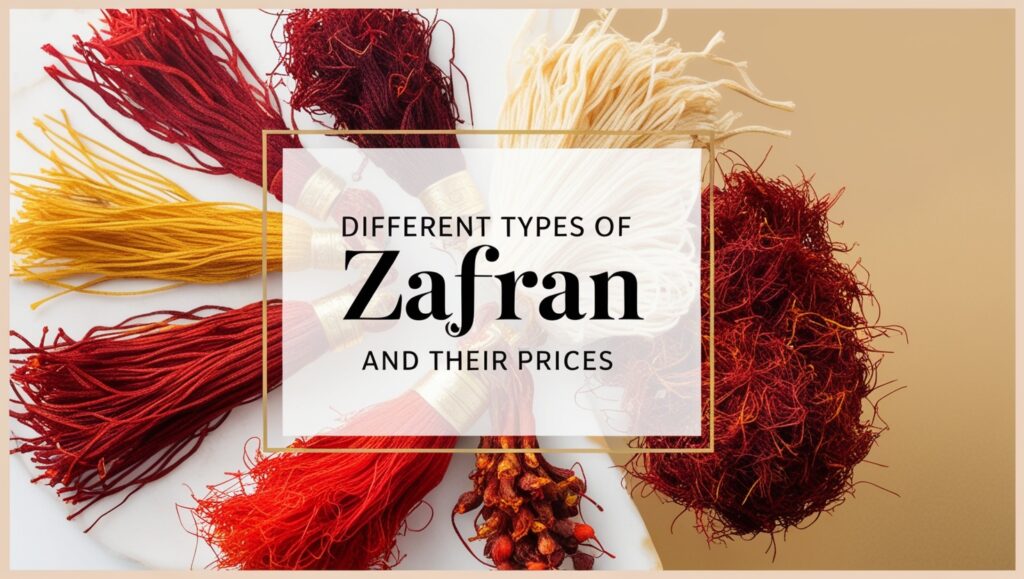
In Pakistan, Zafran (Saffron) comes in different types and origins, varying in quality, Availability, and price. Here, we’ll explore the prominent types, highlight their unique qualities, and provide a price overview for consumers.
Iranian Zafran: Popular and Widely Available
Why Iranian Zafran is Popular: Iranian Zafran is renowned worldwide for its deep, vivid red colour and strong aroma. This variety is commonly chosen due to its Availability and affordability compared to other premium options, making it a popular choice for culinary and medicinal purposes in Pakistan.
Current Prices in Pakistan: Iranian Zafran is available at competitive rates, balancing quality with accessibility, and is often sold in smaller quantities:
- Price per gram: Rs 750
- Price for 3 grams: Rs 2,099
Kashmiri Zafran: Premium Quality, Distinct Flavor
Why Kashmiri Zafran is Known for High Quality: Kashmiri Zafran is prized for its superior quality, deep orange-red hue, and unique flavour profile. Known for its delicate and distinctive aroma, it is often considered a premium choice, with limited Availability and a higher price point due to its meticulous harvesting and processing methods.
Current Prices in Pakistan: Due to its premium status, Kashmiri Zafran commands a higher price in the market:
- Price per gram: Varies but typically around Rs 900–1,200
- Price for 3 grams: Approx. Rs 2,700–3,500
- Price per tola (11.66 grams): Rs 10,000–12,000
Zafran Bulbs and Seeds: Growing Zafran at Home
For Consumers Interested in Cultivating Zafran: With increasing interest in home-grown herbs, Zafran bulbs and seeds are becoming popular among enthusiasts in Pakistan. Cultivating Zafran at home requires patience and suitable conditions, but it offers an economical approach to enjoying fresh Zafran.
Current Prices in Pakistan: The prices of Zafran bulbs and seeds fluctuate depending on Availability and season. Typical prices are as follows:
- Zafran bulbs: Rs 500–700 per bulb
- Zafran seeds: Rs 300–500 per packet, often containing around 10–20 seeds
Original vs. Fake Zafran: How to Identify and Buy Authentic Zafran
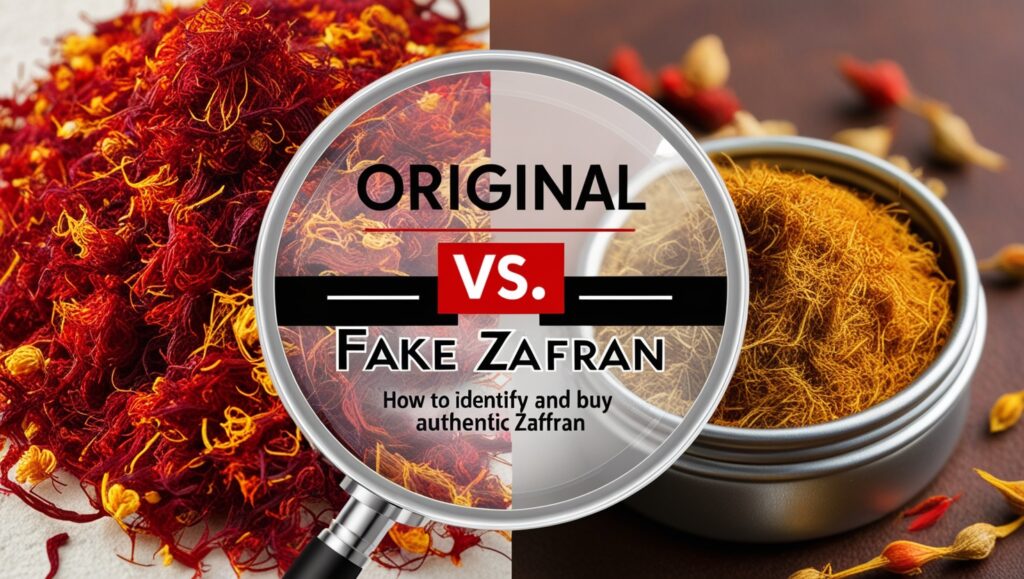
Zafran, or saffron, is among the most valued spices in the world, but it is also one of the most counterfeited. Understanding how to identify genuine Zafran is essential for consumers who want to enjoy its benefits and avoid being misled by imitation products. Here’s a guide to identifying authentic Zafran based on colour, aroma, and texture, along with tips on purchasing it from trusted sellers in Pakistan.
Characteristics of Genuine Zafran
1. Color
Authentic Zafran is a deep, vibrant red, often with slightly darker, reddish-brown tips. Each strand should appear uniformly coloured, as this rich hue indicates high-quality saffron. Counterfeit Zafran may contain mixed-in substances like silk threads, corn husk, or other plant fibres dyed red. When placed in water, genuine Zafran releases a natural yellow-golden colour after a few minutes, while fake saffron may quickly bleed intense red, suggesting artificial colouring.
2. Aroma
Genuine Zafran’s fragrance is distinctive and slightly sweet with earthy undertones. High-quality Zafran has a strong, lingering scent, often a mix of floral and honey-like notes. If the smell is faint, it may indicate lower quality or adulteration. Fake or diluted Zafran often lacks this characteristic aroma or may smell artificial due to synthetic fragrance additives.
3. Texture
Authentic Zafran threads are thin, slightly brittle, and have a trumpet-like shape at one end. They feel dry and should snap easily when broken. Artificial Zafran might feel spongy or overly flexible, indicating the presence of added moisture or oils. Testing texture can be a reliable way to distinguish genuine saffron from imitations often dyed to resemble true Zafran.
Tips on Buying Authentic Zafran
1. Purchase from Reputable Sellers
Look for established retailers with a track record of selling high-quality saffron. Trusted stores and speciality spice shops, both online and offline, often provide authentic Zafran. Check for seller reviews, ratings, and customer feedback to ensure online purchasing reliability. Additionally, some brands and retailers in Pakistan offer certification or purity guarantees, which can help you confidently select genuine saffron.
2. Check for Certifications and Origin Labels
Authentic Zafran is often labelled with details about its origin (e.g., Iranian, Kashmiri). Saffron from these regions is widely recognized for its quality, and products sourced directly from these origins are more likely to be genuine. Look for certifications from reputable authorities, such as ISO 3632, which assesses saffron quality based on purity and potency.
3. Compare Prices
In Pakistan, the price of original Zafran per kilogram or tola is significantly higher than that of imitation products. A seller offering Zafran at a noticeably low price may indicate counterfeit or diluted quality. Genuine Zafran’s high cost stems from its labour-intensive cultivation and harvesting process, so expect to pay a premium.
4. Examine Packaging and Purity Seals
Authentic Zafran often comes in sealed packaging that prevents moisture and light exposure, affecting its quality. Look for well-packaged saffron with purity seals or holograms from recognized brands. This added assurance can indicate that the product has passed quality tests and comes from a reputable source.
By understanding these characteristics and following these tips, you can confidently select high-quality Zafran and enjoy its full culinary and health benefits. Knowing the qualities that distinguish genuine saffron from counterfeit varieties makes it easier to make an informed choice, ensuring you receive the quality you’re paying for.
Health Benefits and Uses of Zafran
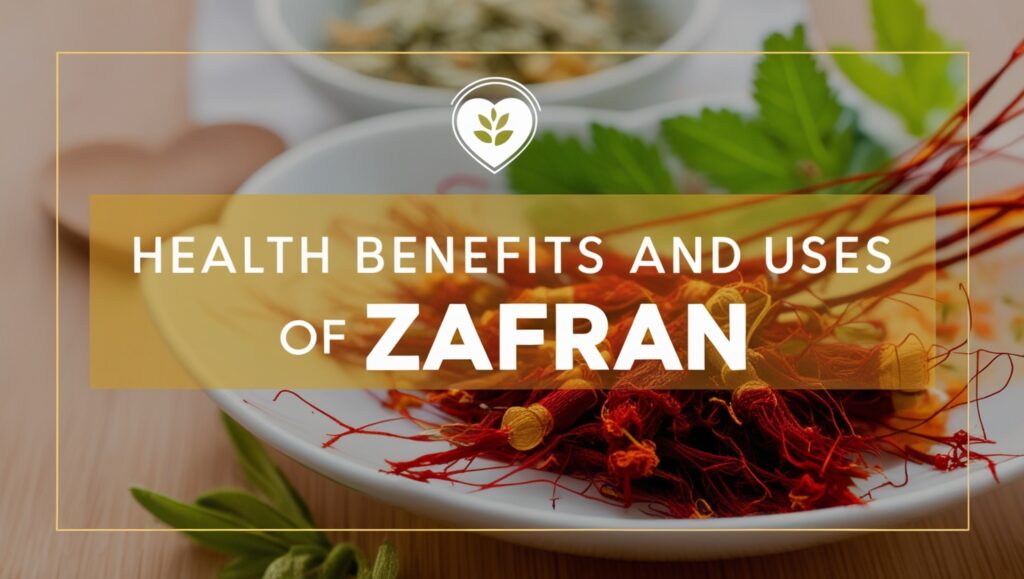
Zafran, known as saffron, is valued for its distinct aroma, vibrant colour, impressive health benefits, and versatile uses, especially in Pakistani households. This section covers how Zafran enhances well-being and how it is utilized in various forms.
Mood Enhancement and Mental Well-being
One of Zafran’s most celebrated benefits is its positive impact on mood and mental health. Known for its antidepressant properties, Zafran contains active compounds such as crocin and safranal, which influence serotonin levels, helping to reduce symptoms of depression and anxiety. Even in small amounts, regular consumption is believed to support emotional balance and promote a sense of calm, making it a sought-after natural remedy for mental wellness.
Rich in Antioxidants
Zafran is loaded with antioxidants, essential in combating oxidative stress within the body. Antioxidants like crocin, picrocrocin, and safranal protect cells from free radical damage, reducing the risk of chronic illnesses like heart disease, cancer, and diabetes. These properties also contribute to a youthful appearance, as antioxidants help slow down signs of ageing, making Zafran a valued ingredient for health and beauty routines.
Culinary Uses in Traditional and Modern Dishes
Zafran is special in Pakistani cuisine and is used in dishes ranging from traditional biryanis to desserts. Known for enhancing flavour and adding a luxurious touch, just a pinch of Zafran can elevate a dish’s taste profile and appearance. Beyond traditional meals, Zafran is increasingly used in modern recipes, including baked goods and infused beverages. It’s rich aroma and unique flavour make it an irreplaceable ingredient in high-end culinary experiences.
Promotes Heart Health
Regular use of Zafran may contribute to cardiovascular health by reducing cholesterol levels and preventing artery clogging. Its anti-inflammatory properties help lower blood pressure, improve overall blood circulation, and reduce the risk of heart disease. For those aiming to maintain a heart-healthy lifestyle, adding Zafran to daily meals can offer natural, long-term cardiovascular benefits.
Enhances Skin Health
Due to its antioxidant and anti-inflammatory properties, Zafran is popular in skin-care routines. It helps brighten the complexion, reduce blemishes, and improve skin texture, making it a favoured ingredient in homemade masks and topical treatments. Zafran-infused oils or creams can help keep skin radiant and youthful, appealing to individuals who prioritize natural beauty remedies.
Benefits of Consuming Zafran in Various Forms
Zafran can be enjoyed in many forms, such as in tea, warm milk, or as a spice in food. Each form has unique advantages: Zafran milk is popular for boosting immunity, while Zafran tea offers a soothing experience supporting digestion. Integrating Zafran into daily routines is simple and effective, allowing consumers to reap its health benefits in various enjoyable ways.
Zafran’s extensive health benefits, from mental well-being to culinary versatility, make it a highly valued spice in Pakistan. Whether used for its medicinal properties, added to meals, or applied in skin-care routines, Zafran is an essential, multi-purpose ingredient for overall health and wellness.
Where to Buy Zafran in Pakistan?
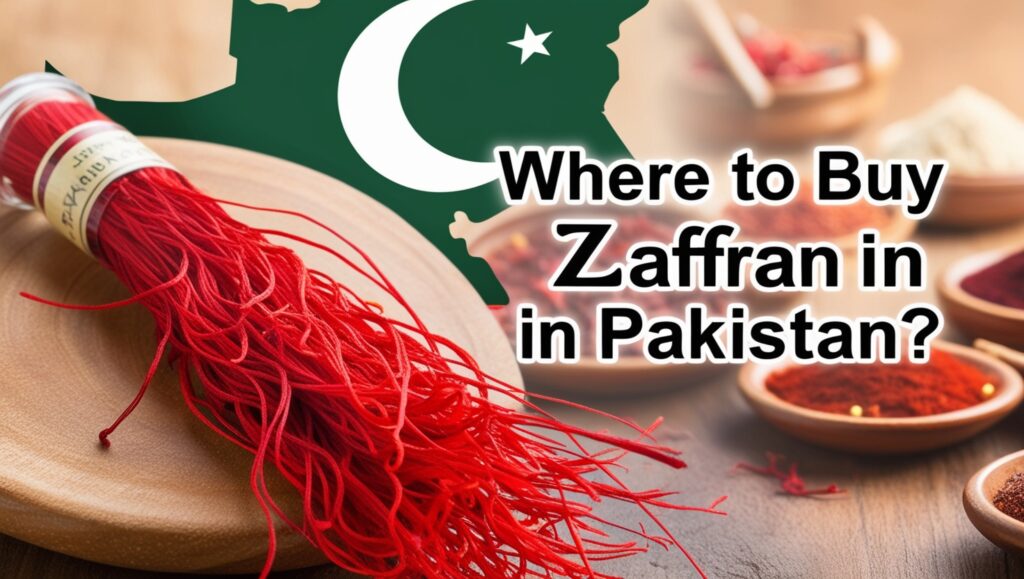
For those looking to buy Zafran in Pakistan, there are several reliable options, including major retail stores, online marketplaces, and reputable e-commerce websites. Ensuring product authenticity is crucial whether you’re purchasing in person or online. Here’s a guide on where to find quality Zafran in Pakistan.
1. Physical Stores in Major Cities
Lahore: Zafran is widely available in speciality spice shops, premium grocery stores, and health food markets in Lahore. Stores like Al-Fatah, Carrefour, and Jalal Sons stock a variety of Zafran options, particularly Iranian and Kashmiri Zafran.
Karachi: Stores like Imtiaz Supermarket, Chase Up, and Naheed Supermarket offer different Zafran varieties in Karachi. These stores maintain quality standards and often source directly from reliable suppliers.
Islamabad: For Islamabad residents, quality Zafran is accessible at stores like Utility Stores, D. Watson, and Shaheen Chemists, which are known for stocking genuine Zafran products.
2. Online Stores and E-commerce Platforms
Many reputable e-commerce websites and local marketplaces in Pakistan sell Zafran for convenience in online shopping. Here’s a list of trusted online stores that deliver nationwide and ensure product authenticity:
| Platform | Product Range | Link |
|---|---|---|
| Amazon | Authentic Iranian & Kashmiri Zafran | Amazon |
| Daraz.pk | Various grades and brands of Zafran | Daraz |
| Al-Fatah Online | Premium Zafran from reliable brands | Al-Fatah |
| Naheed.pk | Imported and local Zafran options | Naheed |
| Qne.com.pk | Organic and high-grade Zafran | Qne |
| Imtiaz Online Store | Various Zafran brands and packages | Imtiaz |
Price Trends for Zafran Over Recent Years
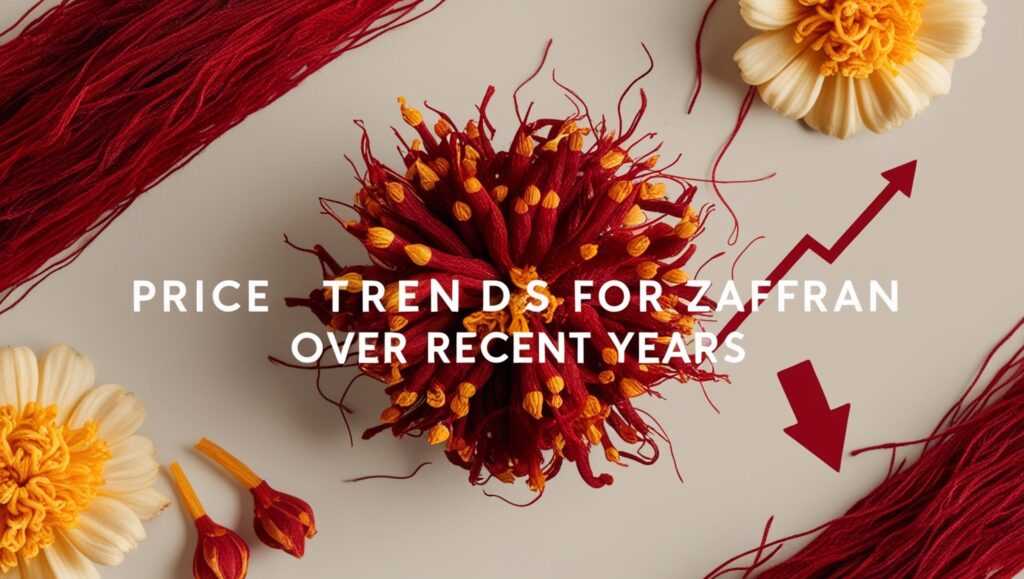
The price of Zafran in Pakistan has experienced notable fluctuations from 2016 to 2020, influenced by various market dynamics, seasonal factors, and international trade conditions. Understanding these trends is essential for consumers and businesses, as they can help inform purchasing decisions.
Price Comparison from 2016 to 2020
- Zafran Price in Pakistan 2016: In 2016, the average price of Zafran per kilogram was approximately PKR 70,000. The market was relatively stable, with supply keeping pace with demand, largely due to good harvests from major producing regions.
- Zafran Price in Pakistan 2017: The price increased slightly to around PKR 75,000 per kilogram in 2017. This rise was driven by a surge in demand from the culinary sector and an increase in export activities. The influx of Iranian Zafran also contributed to competitive pricing, although quality concerns sometimes affected consumer preferences.
- Zafran Price in Pakistan 2018: In 2018, prices continued to rise, reaching approximately PKR 85,000 per kilogram. This increase was attributed to several factors, including poor harvests in key Zafran-producing countries and higher import tariffs, which raised the cost for local distributors. The heightened demand during wedding seasons and festivals further exacerbated price surges.
- Zafran Price in Pakistan 2019: The average price peaked at around PKR 95,000 per kilogram in 2019. This significant hike was due to a combination of low supply and increased consumer awareness regarding the health benefits of Zafran. Additionally, global market trends and currency fluctuations impacted local pricing, increasing costs for imported varieties.
- Zafran Price in Pakistan 2020: By 2020, prices began to stabilize at approximately PKR 90,000 per kilogram. This stability was influenced by improved supply chains and more reliable imports from Iran and Kashmir. However, the ongoing effects of the COVID-19 pandemic introduced uncertainties in both supply and demand, keeping prices fluctuating but generally lower than the previous year.
Market Factors Influencing Zafran Prices
Several market factors have shaped the Zafran pricing landscape in Pakistan over the years:
- Seasonality: Zafran is a seasonal crop whose prices vary significantly based on harvest yields. Years with favourable weather conditions tend to produce more Zafran, leading to lower prices, while adverse conditions can cause supply shortages and price spikes.
- Import Tariffs and Taxes: Changes in government policies regarding import duties on Zafran can greatly affect pricing. Higher tariffs often lead to increased costs for retailers and consumers.
- International Demand: As global demand for high-quality Zafran grows, local prices can be impacted. Countries with significant culinary traditions, such as India and Iran, have seen rising Zafran exports, which can increase competition and drive prices higher.
- Consumer Awareness: The growing recognition of Zafran’s health benefits and culinary value has increased demand in Pakistan. This heightened interest often correlates with price increases, especially during festive seasons.
By understanding these price trends and market factors, consumers can make informed decisions regarding their Zafran purchases. They can ensure they choose quality products at competitive prices over the years, reflecting the local market dynamics and the global landscape that affect this valuable spice.
Conclusion
In this article, we have explored the multifaceted world of Zafran (Saffron) prices in Pakistan. Zafran, renowned for its unique flavour and vibrant colour, is significant in culinary and medicinal applications. Here are the key takeaways:
- Zafran Pricing: The price of Zafran in Pakistan varies based on quality, sourcing, and market demand. As outlined, prices differ for quantities such as 1 kg, 1 tola, and per gram, with high-quality variants like Kashmiri Zafran commanding higher prices due to their superior flavour and aroma. It is essential to compare prices from different sources to find the best deals.
- Types of Zafran: Several types of Zafran are available in the market, including Iranian and Kashmiri varieties. Each has unique characteristics and price points. Understanding the differences can help consumers make informed decisions when purchasing.
- Buying Tips: To ensure you purchase authentic Zafran, it is vital to buy from reputable sellers. Look for certifications or reviews that indicate quality and authenticity. Consider physical stores in major cities and reliable online platforms specializing in spices.
When buying Zafran, always prioritize quality over price to ensure you receive a product that meets your culinary or health needs.
For those interested in sourcing Zafran, we recommend exploring local markets in cities like Lahore and Karachi or visiting established online retailers. Always check for reviews and seller ratings to find reliable sources for your Zafran purchases. By following these tips and staying informed about current prices, you can enjoy the rich flavours and health benefits of Zafran while ensuring you make a sound investment.
FAQs
What is the current price of Zafran in Pakistan?
The price of Zafran varies based on quality and quantity. Generally, the price can range from PKR 20,000 to PKR 80,000 per kg, depending on the grade and sourcing. For smaller quantities, such as 1 tola, prices may vary from PKR 2,000 to PKR 5,000.
How can I determine if the Zafran I’m buying is authentic?
To ensure you purchase genuine Zafran, check for vibrant colour, strong aroma, and a slightly sweet taste. Authentic Zafran should not contain any fillers or additives. Additionally, buy from reputable sellers and look for certifications or customer reviews.
What types of Zafran are available in Pakistan, and how do their prices compare?
The most common types of Zafran available in Pakistan are Iranian and Kashmiri Zafran. Kashmiri Zafran is often priced higher due to its superior quality and distinct flavour. Prices may vary, so comparing costs before making a purchase is advisable.
Why does Zafran have such a high price?
Zafran is one of the most expensive spices in the world due to the labour-intensive harvesting process, the limited growing regions, and the delicate nature of the flower from which it is derived. It takes approximately 150,000 flowers to produce just 1 kg of Zafran, contributing to its high cost.
Where can I buy Zafran in Pakistan?
You can purchase Zafran from local spice markets in major cities like Lahore, Karachi, and Islamabad. Additionally, many online retailers specialize in Zafran and spices, providing convenience and a wider selection.
How should I store Zafran to maintain its quality?
Zafran should be stored in a cool, dark place, away from moisture and direct sunlight. Using an airtight container will help preserve its flavour and potency for longer.
What are the health benefits of consuming Zafran?
Zafran is known for its antioxidant properties and potential health benefits, including improved mood, enhanced memory, and possible anti-inflammatory effects. It has also been traditionally used in herbal medicine for various ailments.
Can I use Zafran in cooking, and how much should I use?
Yes, Zafran can be used in cooking to add flavour and colour to dishes. A pinch (about 1/4 to 1/2 teaspoon) is usually sufficient for most recipes. To maximize flavour, it’s best to dissolve it in warm water or broth before adding it to your dish.
Is there a significant difference in price between Zafran from different countries?
Yes, the price of Zafran can vary significantly between countries due to factors such as cultivation practices, quality, and local demand. For example, Kashmiri Zafran is often more expensive than Iranian Zafran due to its limited Availability and higher quality.
What should I do if I suspect I’ve bought counterfeit Zafran?
If you believe you’ve purchased counterfeit Zafran, contact the seller immediately to resolve the issue. You may also consider reporting the seller to consumer protection agencies or reviewing the product on the platforms where it was purchased to warn other buyers.

